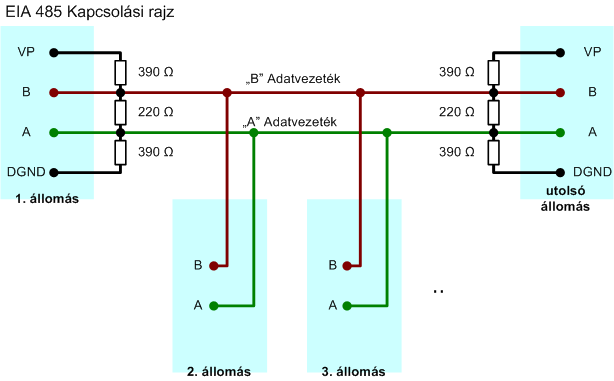1. Introduction:
RS-485 is a standard protocol for transmitting data. It can be used to establish a reliable, high-speed, real-time, multi-node data communication network connection.
RS-485 is also called TIA-485. RS-485 is a standard that defines the electrical characteristics of drivers and receivers used in serial communication systems.
RS485 is widely used in industrial control systems and can handle up to 32 devices on a single network. RS-485 is commonly used in industrial automation to monitor and control PLCs, variable frequency drives, DCS, etc.
This article will mainly introduce the basic principles, characteristics, wiring and practical application cases of RS-485 communication.

2. Basic principles of RS-485 communication:
RS-485 is an asynchronous serial communication protocol that enables multi-node communication. RS-485 communication is based on differential signaling, where information is transmitted via two complementary signals sent over two wires (usually referred to as A and B). The voltage difference between the two wires is what conveys the information, rather than the voltage between a single wire and ground. This makes the RS-485 system highly resistant to common-mode noise.
And it is able to increase transmission distance and transmission speed. The RS-485 protocol stipulates that a master node can communicate with up to 32 slave nodes, and the communication between the individual nodes is coordinated by the master node.

3. Features of RS-485 communication:
RS-485 communication is high-speed, reliable, stable, real-time, and low-cost. Since RS-485 supports multi-node communication, it can save complex signal forwarding mechanisms and make it easier to expand the network. RS-485 protocol is standardized, so compatibility issues can be avoided.
In addition, due to the application of differential transmission technology, RS-485 communication has high immunity to electromagnetic interference. At the same time, RS-485 communication can ensure the stability and reliability of communication at a communication distance of up to 1.2 kilometers.
RS-485 signals can be transmitted without confirmation. Interruption or interference of differential signals may damage data without repetition or reception; a “fire and forget” system.
4. RS-485 wiring:
The wiring of RS-485 needs to adopt the twisted pair mechanism as shown in the figure below, and the twisted pair consisting of a positive and negative data line is laid. At the same time, because RS-485 uses differential signals for transmission, we also need to provide a common signal ground for the two data lines. In order to avoid interference from other interference signals, we can add an RS-485 interference-resistant attenuator in the middle of the wiring.
5. RS-485 communication example:
Let’s consider a simple example of an RS-485 network with one master and two slaves.
Idle state: When no device is transmitting, the line is in an idle state. In this state, the differential voltage between the A and B lines is zero.
Master transmits: When the master wants to send data, it changes the voltage difference between the A and B lines. For example, a “1” might mean that A has a higher voltage than B, and a “0” might mean that B has a higher voltage than A.
Slaves will receive: All devices on the network, including slaves, constantly monitor the voltage difference between the A and B lines. When they detect a change, they interpret it as some data.
Slave responds: If the command sent by the master requires a response from the slave, that slave will wait until the master has finished transmitting and then change the voltage difference between the A and B lines to send its response.
Master receives: The master, like the slave, constantly monitors the voltage difference between the A and B lines, so it will receive a response from the slave.
Return to Idle: After all data has been transmitted, the line returns to the idle state, with a zero voltage difference between lines A and B.
In this way, data can be sent back and forth over an RS-485 network. The important thing to note is that all devices on the network need to use the same logic to interpret the voltage differences as bits (i.e., whether A is higher than B for a “1” or a “0”). In a network with multiple devices, each device needs to have a unique address so that it knows when to listen and when to ignore communications on the line. This is usually handled by the protocol used on top of RS-485, such as Modbus or Profibus.
For example, in a Modbus network, each message sent by the master begins with the address of the destination device. When devices see a message with their address, they know to process the message and potentially send a response. If the address does not match their own, the message is ignored.

6. Summary:
Compared with TCP/IP, USB, I2C and other protocols, although RS-485 does not have a particularly fast transmission speed, it has unparalleled advantages: it can realize multi-node communication, has strong anti-interference ability, and has a long communication distance, which are unmatched by other protocols. As a communication protocol widely used in industrial control, automation and other fields, RS-485 still has a very broad prospect for future use.
